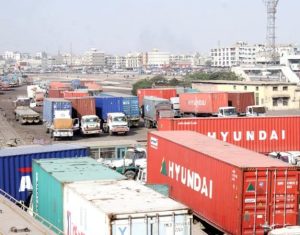KARACHI – The shortage of irrigation water has hit the banana crop’s production in Sindh, which produces over 85 per cent of this crop in Pakistan, with the fruit fetching a low rate for the farmers than the previous year.
According to Sindh Agriculture Department’s estimates, the province’s total production of one and a half dozen varieties of banana in 2017 was over 127,000 tons.
However, the crop yield was lower in 2018 and the agriculture officials are yet to compile the year’s figures. The farmers are selling the crop for an average rate of around Rs500 per maund while in the fruit markets bananas are fetching between Rs30 to Rs60 per dozen, depending on the quality of the fruit. However, some progressive farmers who were lucky to irrigate their orchards with sufficient water have earned up to Rs800 per maund.
Akbar Hussain Chughtai, a Sanghar district based manager of an orchard, said that he sold his crop at Rs800 per maund with more than 150 maund per acre yield.
“Bananas with a good aroma, colour and taste are always pricier,” he noted, pointing out that his orchard can be counted among the ones producing quality bananas in the province. However, for a considerably high number of farmers the crop’s rates were generally lower this season.
“The orchards in our area mostly got not more than Rs500 per maund,” said Imdad Talpur, who owns a farm in Matiari district. Until the 1980s, the coastal district Thatta was known for banana cultivation but the farmers say Bunchy Top ravaged the orchards.
It is now largely grown in Tando Allahyar, Matiari, Badin, Nawabshah, Khairpur and Hyderabad districts.
The crop’s arrival in the market though continues through the year, peaks from the months of September to December and a gradual downslide follows from January onward.
Most of the orchards are irrigated by the Rohri canal which springs from the Sukkur barrage.”It’s a delta crop like sugarcane which is water intensive” observed Prof Ismail Kumbhar of Sindh Agriculture University. According to him, the fruit was sensitive to heatwave, frost, water scarcity and certain diseases.
“In 2018, the crop was badly hit by the water shortage,” he said adding that “the production has also lowered from 2017.” The orchards require more water mostly from August to December.”Last week I was travelling in Khairpur district. I saw their banana leaves paling,” he told, explaining that except for the orchards located around head irrigation system, a majority of farms had been badly affected by the water unavailability.
He lamented that in addition to the lower yields, the absence of grading, packing, marketing and transportation usually caused up to 40 per cent of post-harvest losses.
“The developed countries like China have decreased their post-harvest losses to as low as 5 per cent,” he said. He pointed out that transportation alone caused major losses to the fruit as bunches of banana were placed over each other and sometimes even the labour could be seen sitting over the bunches.
According to him, more than 10 per cent of the crop was also affected by the Panama disease. “Unlike the Bunchy Top disease, effective research and pest prevention and removal for Panama disease can’t be noticed,” he said.
Prof Kumbhar emphasized that the organizations like Pakistan Agriculture Research Council and Sindh Agriculture Research should conduct research and develop effective pesticides to kill that pest.
The academician also found a lack of proper farm management to be another cause of the spread of the viral diseases. “Once we visited a banana orchard in Australia. We were asked if we had visited any other farm in last 24 hours and then we were told to dip our shoe in the fungicide before entering the field,” he told, bewailing that such farm practices vastly lack in Sindh.
He said banana crop was sensitive to diseases and preventive measures through better farm management could greatly lower the risk of such losses. An official of Sindh Agriculture Research Department, who requested anonymity, acknowledged that the research required over Panama disease still lacked.














